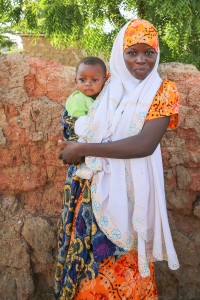Today, on World AIDS Day, we recognize the significant progress that has been made in the fight against HIV/AIDS. In mid-2015, UNAIDS announced that the global goal of putting 15 million HIV-infected patients on treatment by 2015 had been reached nine months in advance of the deadline. With a view toward the goal of ending the AIDS epidemic, UNAIDS has convened the global HIV community around the 90-90-90 targets, where 90 percent of HIV-infected patients know their status, 90 percent of those patients are on treatment, and 90 percent of patients on treatment achieve viral suppression.
Children, however, have largely been left behind. According to the latest report on the Global Plan Toward the Elimination of New HIV Infections Among Children and Keeping Their Mothers Alive, only 31 perent of HIV-infected children are on treatment. The barriers to diagnosing and linking children to care can be enormous. To achieve the 90-90-90 targets for the pediatric population, innovative strategies to reach the “First 90”—diagnosis of children—are essential.
HIV-exposed infants are an especially vulnerable population. Approximately half of HIV-infected infants die by age 2 without treatment,[i] with peak morality occurring between 2 to 3 months of age.[ii] As such, Early Infant Diagnosis of HIV (EID) is an essential—and emergency—test. At present, only 49 percent of infants are receiving an EID test by the WHO recommended 6- to 8-week window, which means that the majority of children are being tested too late.
One of the most promising strategies is the implementation of Point of Care (POC) Early Infant Diagnosis testing. EID is currently performed on sophisticated machines operated by highly-trained staff in centralized laboratories. Results often take several months to reach the infant patients and their caregivers; at that point, it may be too late to take clinical action, or caregivers may not return to facilities for results. Currently, infants are the only patients who do not find out their HIV status on the same day as testing. Conversely, POC devices are miniaturized devices that have the capacity to perform an EID test at the facility where a patient presents for care, provide same-day test results, and potentially facilitate same-day treatment. In partnership with UNICEF, the Clinton Health Access Initiative, Inc. (CHAI) is supporting ministries of health in seven high-burden countries to introduce and implement POC EID with funding from UNITAID.
On World AIDS Day, CHAI co-hosted a symposium with the Elizabeth Glaser Pediatric AIDS Foundation, UNICEF, and UNITAID on the POC EID market and deployment and implementation strategies at the 18th International Conference on AIDS and STIs in Africa (ICASA) in Harare, Zimbabwe. The symposium focused on a discussion of how to optimize EID in 13 African countries through the introduction of the new devices and featured perspectives from the Ministry of Health Malawi, Instituto Nacional de Saude Mozambique, and Ministry of Health Zimbabwe on approaches to integrating POC EID in national EID programs and on experiences to date.
At the symposium, the commitment of key global partners to scale up pediatric HIV diagnosis and linkage to treatment was clear, as was the commitment of national leadership to implement this technology in countries. But perhaps the most powerful moment of the symposium was a presentation delivered by an HIV-infected mother who described her experience in Zimbabwe’s EID program. She told the story of her twin girls: how she did everything in her power to ensure that she remained in care during her pregnancy and breastfeeding to reduce the risk that she would transmit HIV to her infants. How she followed the health workers’ instructions to bring her babies for testing at the recommended 6-weeks of age time point. How she waited well over a month to receive the results, filled with anxiety, periodically trekking to the facility to see whether the results had arrived. And, ultimately, how she enjoyed an enormous sense of relief and success when she received two HIV-negative diagnoses. This mother said she spoke not only for herself but also for all the HIV-infected mothers in countries like Zimbabwe in saying that POC EID devices—and access to same-day results—would dramatically affect their lives and the lives of their children. This mother’s brave testimony reminded the audience that in the 90-90-90 era, as we look toward the end of AIDS, it is unacceptable for children to be left behind. CHAI, in part through its POC EID work and its broader pediatric HIV strategy, will continue to work tirelessly to ensure that they are not and that an HIV-free generation is realized.
[i] Newell ML, et al. Morality of infected and uninfected infants born to HIV-infected mothers in Africa: a pooled analysis. Lancet 2004; 364:1236-43.
[ii] Bourne DE, et al. 2009. Emergence of a peak in early infant mortality due to HIV/AIDS in South Africa. AIDS 23:101–106.







